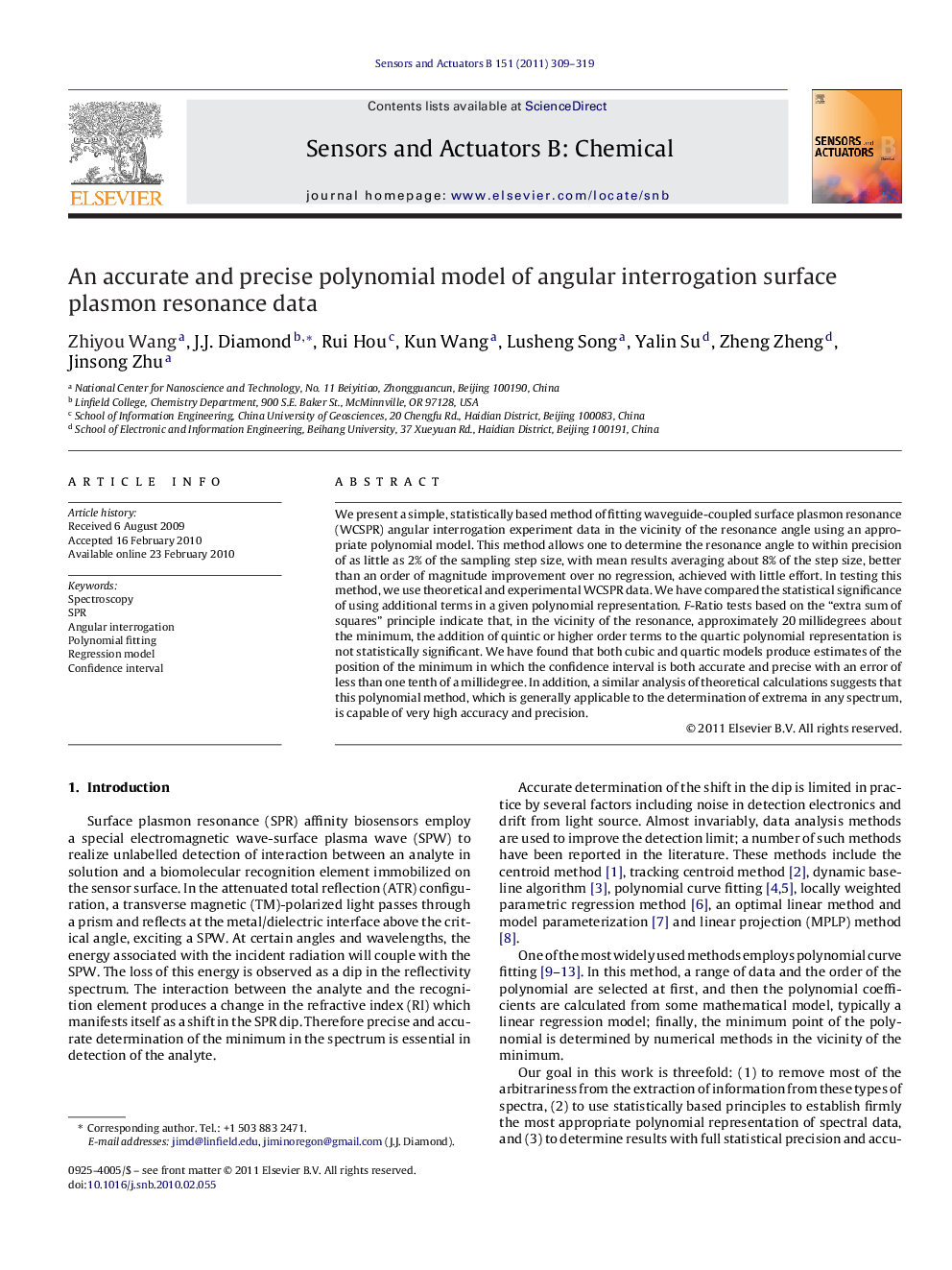| کد مقاله | کد نشریه | سال انتشار | مقاله انگلیسی | نسخه تمام متن |
|---|---|---|---|---|
| 740868 | 894196 | 2011 | 11 صفحه PDF | دانلود رایگان |

We present a simple, statistically based method of fitting waveguide-coupled surface plasmon resonance (WCSPR) angular interrogation experiment data in the vicinity of the resonance angle using an appropriate polynomial model. This method allows one to determine the resonance angle to within precision of as little as 2% of the sampling step size, with mean results averaging about 8% of the step size, better than an order of magnitude improvement over no regression, achieved with little effort. In testing this method, we use theoretical and experimental WCSPR data. We have compared the statistical significance of using additional terms in a given polynomial representation. F-Ratio tests based on the “extra sum of squares” principle indicate that, in the vicinity of the resonance, approximately 20 millidegrees about the minimum, the addition of quintic or higher order terms to the quartic polynomial representation is not statistically significant. We have found that both cubic and quartic models produce estimates of the position of the minimum in which the confidence interval is both accurate and precise with an error of less than one tenth of a millidegree. In addition, a similar analysis of theoretical calculations suggests that this polynomial method, which is generally applicable to the determination of extrema in any spectrum, is capable of very high accuracy and precision.
Journal: Sensors and Actuators B: Chemical - Volume 151, Issue 2, 28 January 2011, Pages 309–319